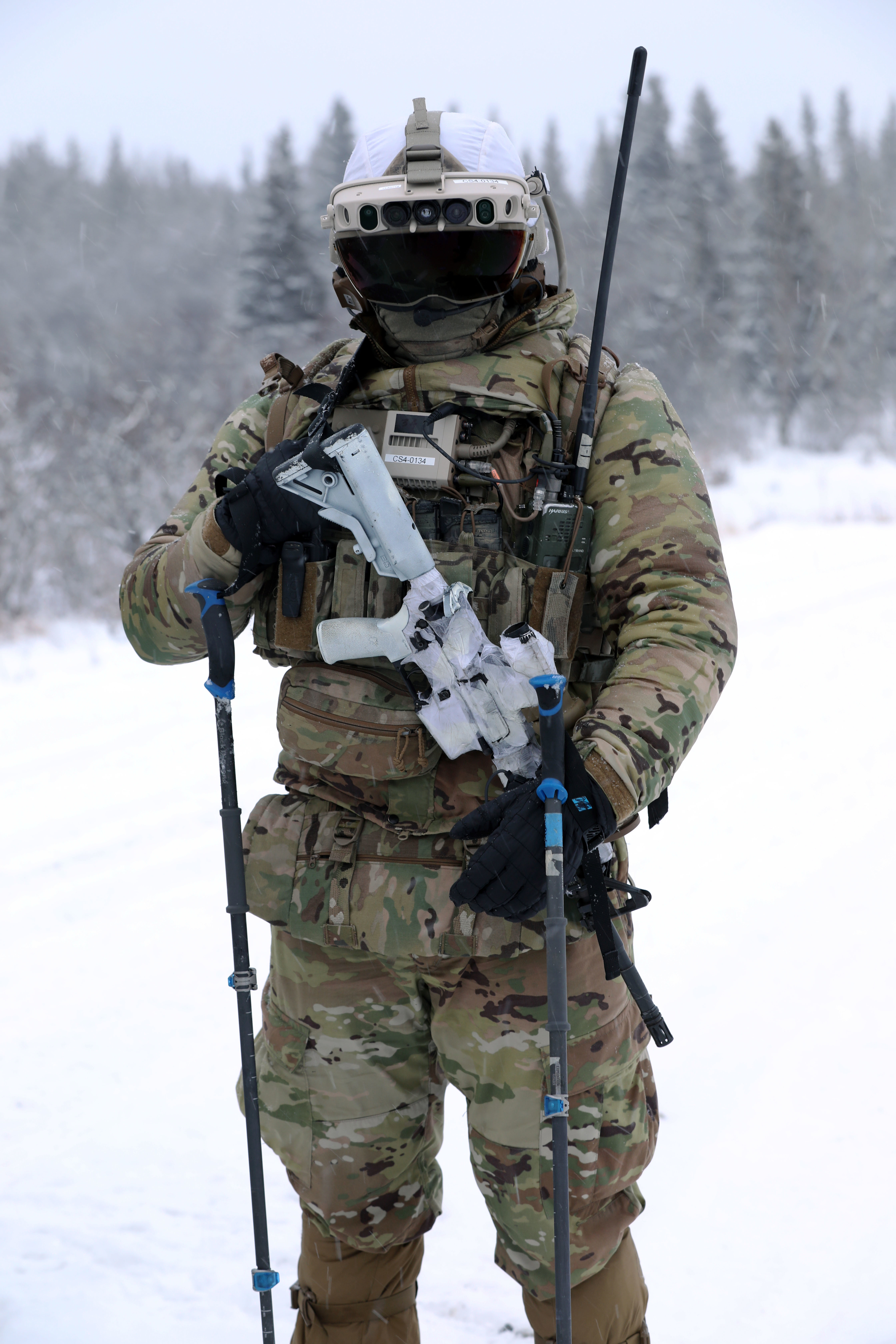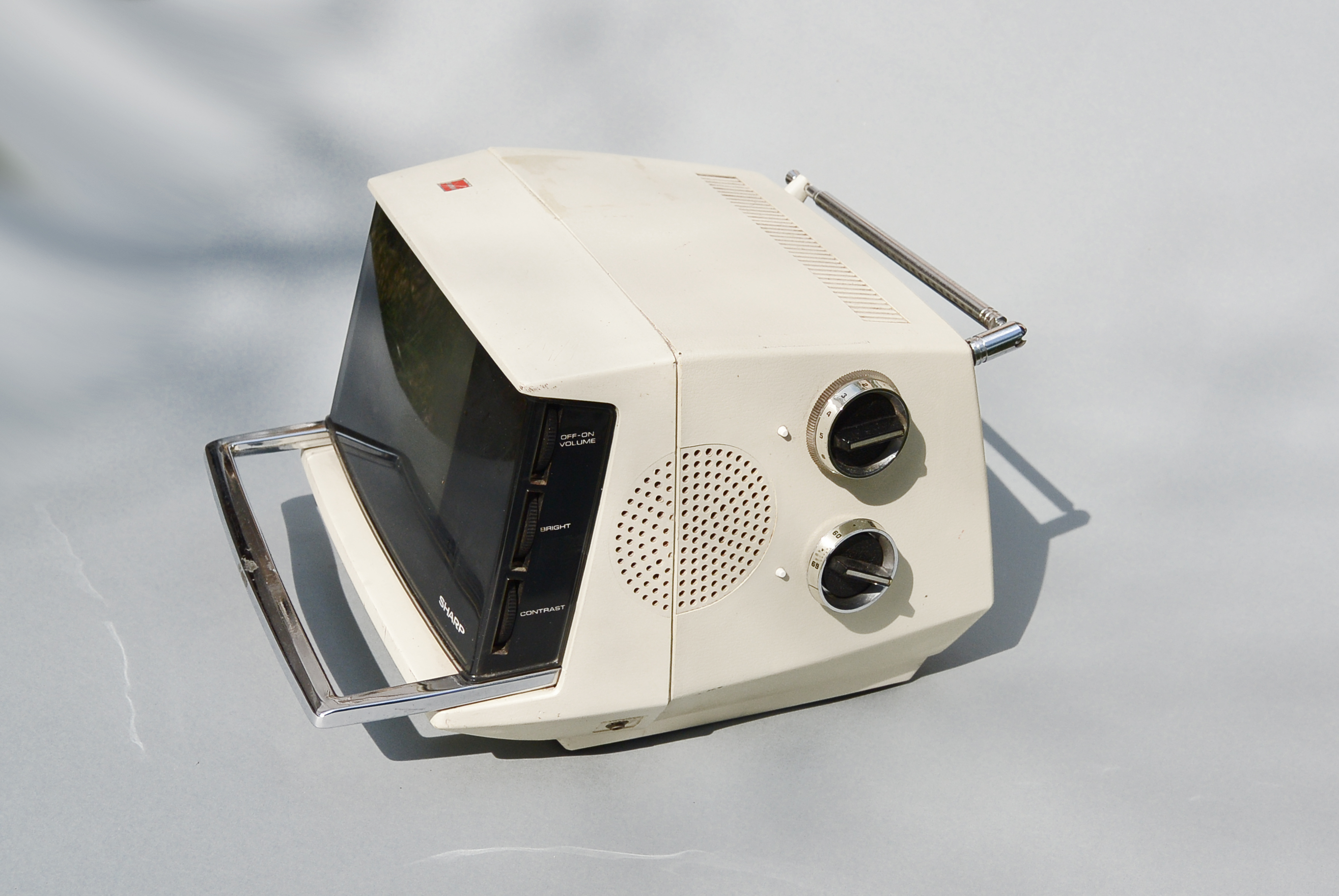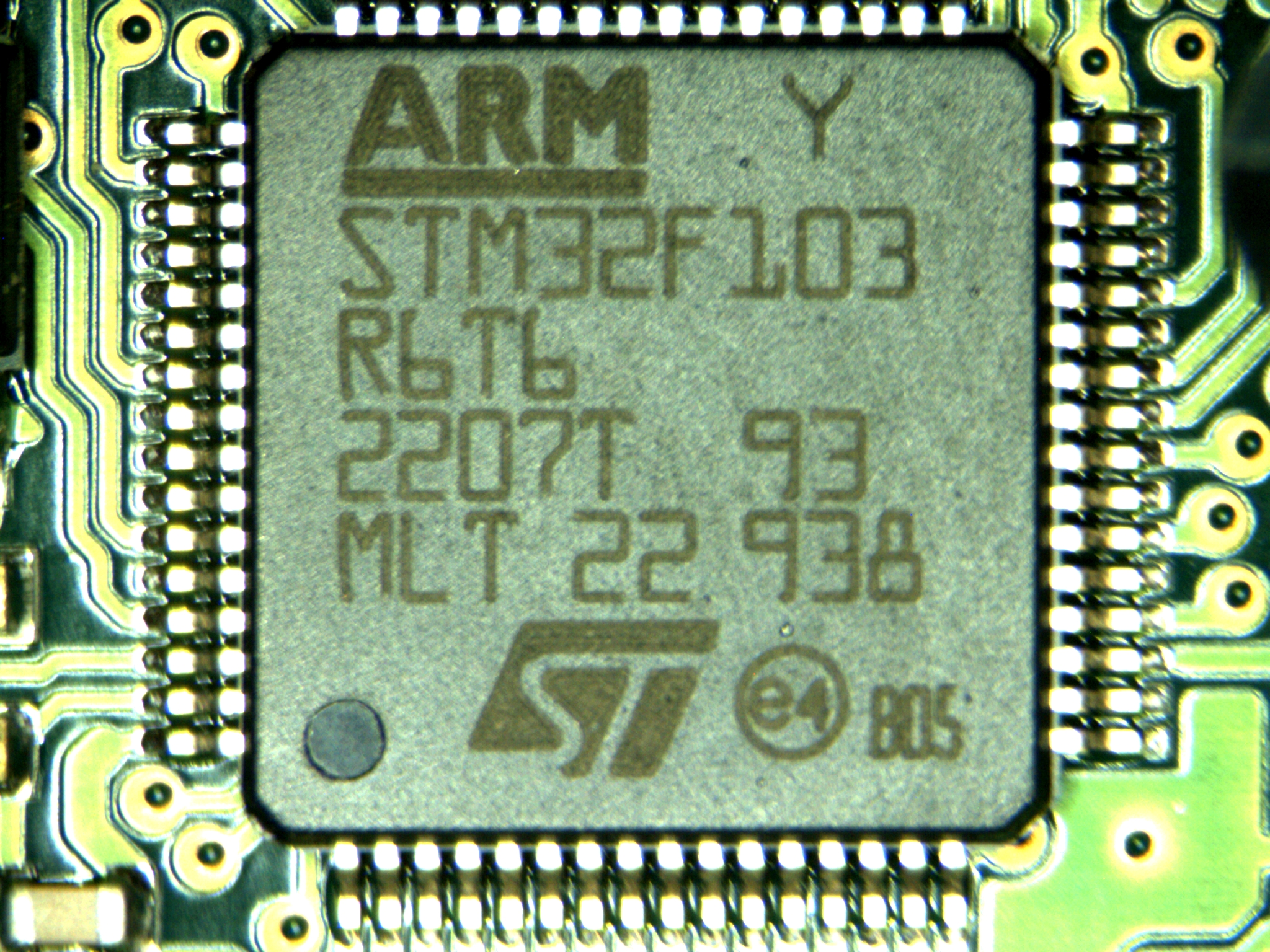|
MicroVision, Inc.
MicroVision, Inc. is an American company that develops laser scanning technology for projection, 3D sensing, and image capture. MicroVision's display technology uses a micro-electrical mechanical systems (MEMS) scanning mirror with red, green, blue, and infrared lasers, optics and electronics to project and/or capture images. Business The company sells and licenses its products primarily to original equipment manufacturers (OEMs) such as Microsoft, Pioneer, Sharp, and Sony in the projector and Augmented reality market. The same is also the goal in the automotive sector for lidar devices. The company also has the US military as a customer. Directly about an order at the beginning of the millennium. Further, the Integrated Visual Augmentation System (IVAS) is based on the Microsoft HoloLens 2, which in turn uses Microvision projectors. Microvision is bound by non-disclosure agreements, so Microvision has never confirmed that Microsoft is using the projectors in IVAS but said that ... [...More Info...] [...Related Items...] OR: [Wikipedia] [Google] [Baidu] |
Public Company
A public company is a company whose ownership is organized via shares of stock which are intended to be freely traded on a stock exchange or in over-the-counter markets. A public (publicly traded) company can be listed on a stock exchange (listed company), which facilitates the trade of shares, or not (unlisted public company). In some jurisdictions, public companies over a certain size must be listed on an exchange. In most cases, public companies are ''private'' enterprises in the ''private'' sector, and "public" emphasizes their reporting and trading on the public markets. Public companies are formed within the legal systems of particular states, and therefore have associations and formal designations which are distinct and separate in the polity in which they reside. In the United States, for example, a public company is usually a type of corporation (though a corporation need not be a public company), in the United Kingdom it is usually a public limited company (plc), i ... [...More Info...] [...Related Items...] OR: [Wikipedia] [Google] [Baidu] |
Sharp Corporation
is a Japanese multinational corporation that designs and manufactures electronic products, headquartered in Sakai-ku, Sakai, Osaka Prefecture. Since 2016 it has been majority owned by the Taiwan-based Foxconn Group. Sharp employs more than 50,000 people worldwide. The company was founded in September 1912 in Tokyo and takes its name from one of its founder's first Ever-Sharp mechanical pencil, which was invented by Tokuji Hayakawa in 1915. History Early years 1912–1945 In 1912, Tokuji Hayakawa founded a metal workshop in Tokyo. The first of his many inventions was a snap buckle named 'Tokubijo'. Another of his inventions was the Ever-Ready Sharp mechanical pencil in 1915. The product became one of the first internationally available mechanical pencils (while concurrent US design replaced it soon and became a modern type), and due to this big success the Sharp Corporation derived its name from it. After the pencil business was destroyed by the 1923 Great Kantō earthquak ... [...More Info...] [...Related Items...] OR: [Wikipedia] [Google] [Baidu] |
Smartphone
A smartphone is a portable computer device that combines mobile telephone and computing functions into one unit. They are distinguished from feature phones by their stronger hardware capabilities and extensive mobile operating systems, which facilitate wider software, internet (including web browsing over mobile broadband), and multimedia functionality (including music, video, cameras, and gaming), alongside core phone functions such as voice calls and text messaging. Smartphones typically contain a number of metal–oxide–semiconductor (MOS) integrated circuit (IC) chips, include various sensors that can be leveraged by pre-included and third-party software (such as a magnetometer, proximity sensors, barometer, gyroscope, accelerometer and more), and support wireless communications protocols (such as Bluetooth, Wi-Fi, or satellite navigation). Early smartphones were marketed primarily towards the enterprise market, attempting to bridge the functionality of ... [...More Info...] [...Related Items...] OR: [Wikipedia] [Google] [Baidu] |
Automotive Head-up Display
An automotive head-up display or automotive heads-up display —also known as a auto-HUD— is any transparent display that presents data in the automobile without requiring users to look away from their usual viewpoints. The origin of the name stems from a pilot being able to view information with the head positioned "up" and looking forward, instead of angled down looking at lower instruments. At this time, there are three different approaches to OEM HUDs in automobiles. The first is to treat the back of the windshield in such a way that an image projected onto it will reflect to the driver. The second is to have a small combiner that is separate from the windshield. Combiners can be retracted. The third is to laminate a transparent display in between layers of the windshield glass. Timeline *1988: Nissan was the first manufacturer to offer a HUD in the JDM market with the 1988 Nissan Silvia S13. *1988: General Motors began using head-up displays. Their first HUD units ... [...More Info...] [...Related Items...] OR: [Wikipedia] [Google] [Baidu] |
Virtual Retinal Display
A virtual retinal display (VRD), also known as a retinal scan display (RSD) or retinal projector (RP), is a display technology that draws a raster display (like a television) directly onto the retina of the eye. History In the past similar systems have been made by projecting a defocused image directly in front of the user's eye on a small "screen", normally in the form of large glasses. The user focused their eyes on the background, where the screen appeared to be floating. The disadvantage of these systems was the limited area covered by the "screen", the high weight of the small televisions used to project the display, and the fact that the image would appear focused only if the user was focusing at a particular "depth". Limited brightness made them useful only in indoor settings as well. Only recently a number of developments have made a true VRD system practical. In particular the development of high-brightness LEDs have made the displays bright enough to be used during t ... [...More Info...] [...Related Items...] OR: [Wikipedia] [Google] [Baidu] |
Handheld Projector
A handheld projector (also known as a pocket projector, mobile projector, pico projector or mini beamer) is an image projector in a handheld device. It was developed as a computer display device for compact portable devices such as mobile phones, personal digital assistants, and digital cameras, which have sufficient storage capacity to handle presentation materials but are too small to accommodate a display screen that an audience can see easily. Handheld projectors involve miniaturized hardware, and software that can project digital images onto a nearby viewing surface. The system comprises five main parts: the battery, the electronics, the laser or LED light sources, the combiner optic, and in some cases, scanning micromirror devices. First, the electronics system turns the image into an electronic signal. Next, the electronic signals drive laser or LED light sources with different colors and intensities down different paths. In the combiner optic, the different lig ... [...More Info...] [...Related Items...] OR: [Wikipedia] [Google] [Baidu] |
Cathode Ray Tube
A cathode-ray tube (CRT) is a vacuum tube containing one or more electron guns, which emit electron beams that are manipulated to display images on a phosphorescent screen. The images may represent electrical waveforms ( oscilloscope), pictures (television set, computer monitor), radar targets, or other phenomena. A CRT on a television set is commonly called a picture tube. CRTs have also been used as memory devices, in which case the screen is not intended to be visible to an observer. The term ''cathode ray'' was used to describe electron beams when they were first discovered, before it was understood that what was emitted from the cathode was a beam of electrons. In CRT television sets and computer monitors, the entire front area of the tube is scanned repeatedly and systematically in a fixed pattern called a raster. In color devices, an image is produced by controlling the intensity of each of three electron beams, one for each additive primary color (red, green, and bl ... [...More Info...] [...Related Items...] OR: [Wikipedia] [Google] [Baidu] |
STMicroelectronics
STMicroelectronics N.V. commonly referred as ST or STMicro is a Dutch multinational corporation and technology company of French-Italian origin headquartered in Plan-les-Ouates near Geneva, Switzerland and listed on the French stock market. ST is the largest European semiconductor contract manufacturing and design company. The company resulted from the merger of two government-owned semiconductor companies in 1987: Thomson Semiconducteurs of France and SGS Microelettronica of Italy. History ST was formed in 1987 by the merger of two government-owned semiconductor companies: Italian SGS Microelettronica (where SGS stands for ''Società Generale Semiconduttori'', "Semiconductors' General Company"), and French Thomson Semiconducteurs, the semiconductor arm of Thomson. SGS Microelettronica originated in 1972 from a previous merger of two companies: * ATES (Aquila Tubi e Semiconduttori), a vacuum tube and semiconductor maker headquartered in L'Aquila, the regional capital of the r ... [...More Info...] [...Related Items...] OR: [Wikipedia] [Google] [Baidu] |
HoloLens 2
Microsoft HoloLens 2 is an augmented reality (AR) headset developed and manufactured by Microsoft. It is the successor to the original Microsoft HoloLens. The first variant of the device, The HoloLens 2 enterprise edition, debuted on February 24, 2019. This was followed by a developer edition that was announced on May 2, 2019. The HoloLens 2 was subsequently released in limited numbers on November 7, 2019. Description The HoloLens 2 was announced by lead HoloLens developer Alex Kipman on February 24, 2019 at Mobile World Congress (MWC) in Barcelona, Spain. On May 7, 2019 the HoloLens 2 was shown again at the Microsoft Build developer conference. There, it showcased an application created with the Unreal Game Engine. The HoloLens 2 are combination waveguide and laser-based stereoscopic & full-color mixed reality smartglasses developed and manufactured jointly by Microsoft and MicroVision, Inc. in Redmond, Washington. It is the direct model successor to the pioneerin ... [...More Info...] [...Related Items...] OR: [Wikipedia] [Google] [Baidu] |
Integrated Visual Augmentation System
The Integrated Visual Augmentation System (IVAS) is a United States Army program to provide infantry with an augmented reality headset, which provides a wide variety of capabilities to soldiers including, but not limited to, digital wide-angle multi-spectral image fusion of solid-state low-light (digital night vision), thermal, and daylight sensing, object outlining emphasis, 3D map and waypoint overlays, a picture-in-picture display of weapons sights, and a Squad Immersive Virtual Trainer that allows them to train against virtual enemies overlaid upon their real-world field of vision. History The concept for IVAS has its origins in the Nomad Augmented Vision System (NAVS) from the early 2000s. Formerly deployed to Stryker (a family of 8-wheeled, armored, infantry carrier vehicle) brigades, NAVS were monoscopic, monochromatic, and lacked much of the sensor, processing, and data-linking capabilities of IVAS. 2020 As of October 2020 the IVAS system was on its third iterati ... [...More Info...] [...Related Items...] OR: [Wikipedia] [Google] [Baidu] |
Lidar
Lidar (, also LIDAR, or LiDAR; sometimes LADAR) is a method for determining ranges (variable distance) by targeting an object or a surface with a laser and measuring the time for the reflected light to return to the receiver. It can also be used to make digital 3-D representations of areas on the Earth's surface and ocean bottom of the intertidal and near coastal zone by varying the wavelength of light. It has terrestrial, airborne, and mobile applications. ''Lidar'' is an acronym of "light detection and ranging" or "laser imaging, detection, and ranging". It is sometimes called 3-D laser scanning, a special combination of 3-D scanning and laser scanning. Lidar is commonly used to make high-resolution maps, with applications in surveying, geodesy, geomatics, archaeology, geography, geology, geomorphology, seismology, forestry, atmospheric physics, laser guidance, airborne laser swath mapping (ALSM), and laser altimetry. It is also used in control and navigation for som ... [...More Info...] [...Related Items...] OR: [Wikipedia] [Google] [Baidu] |







